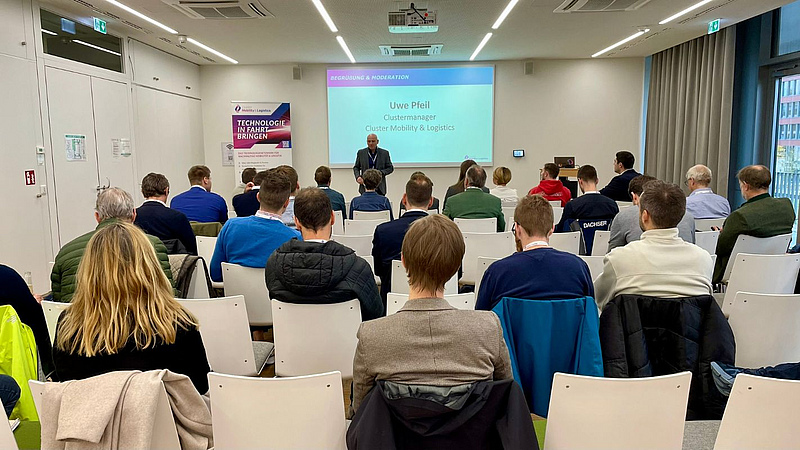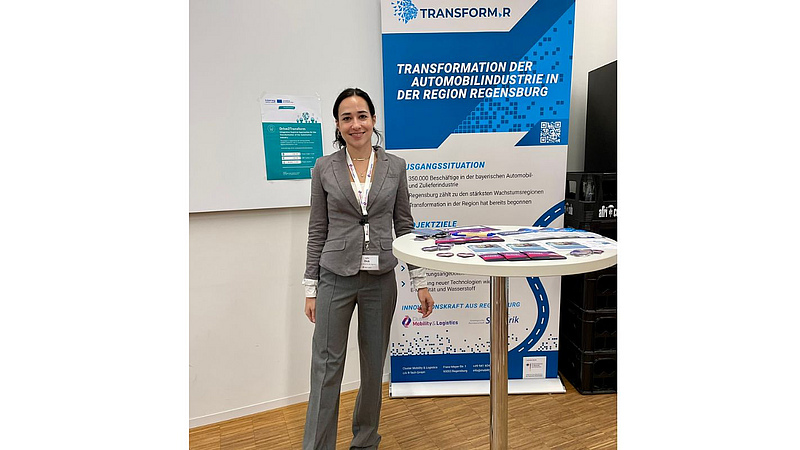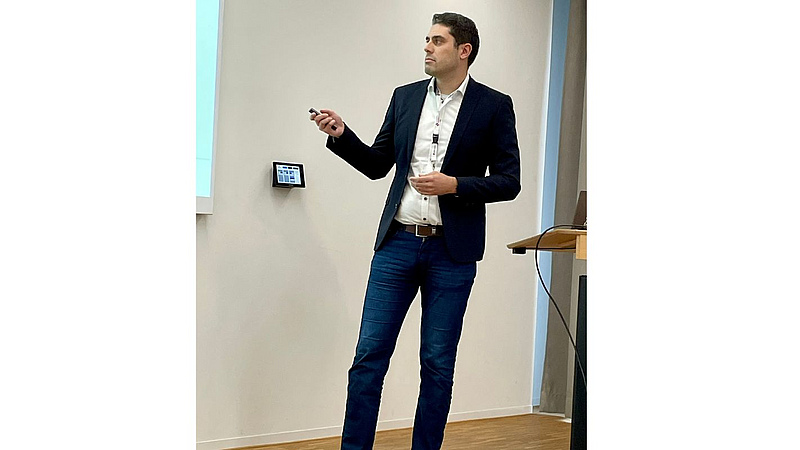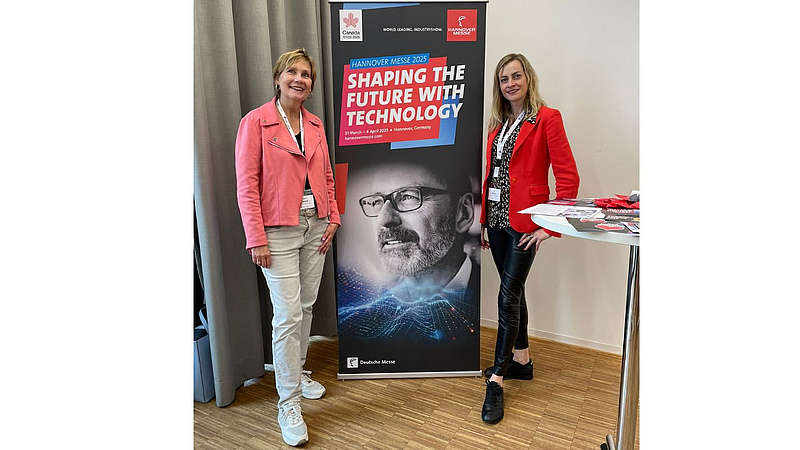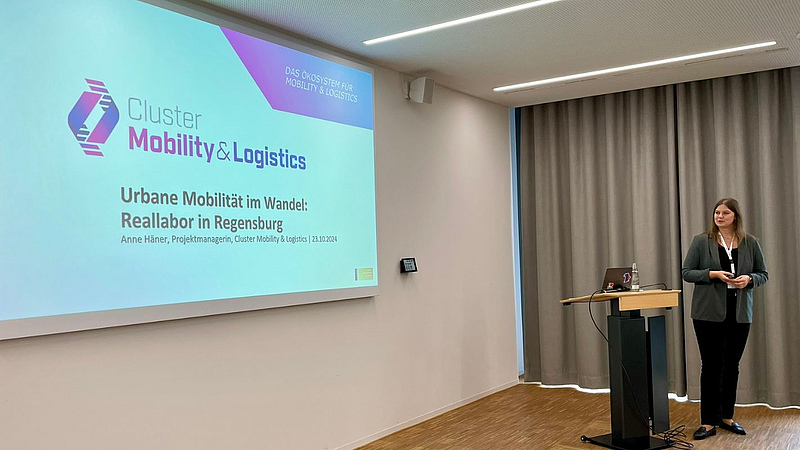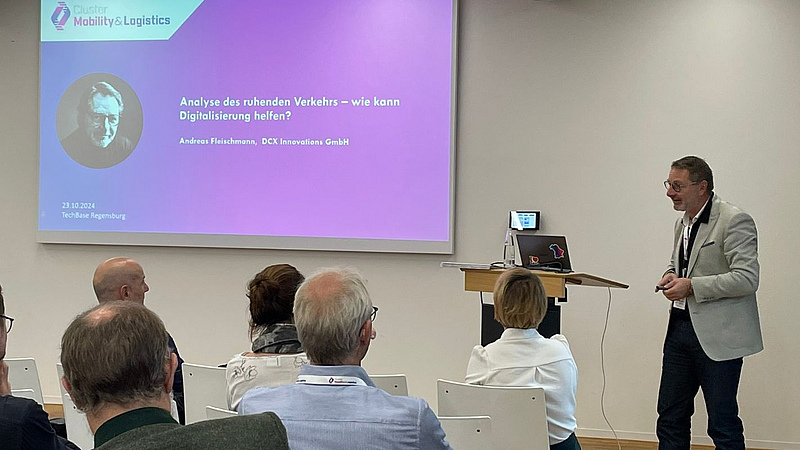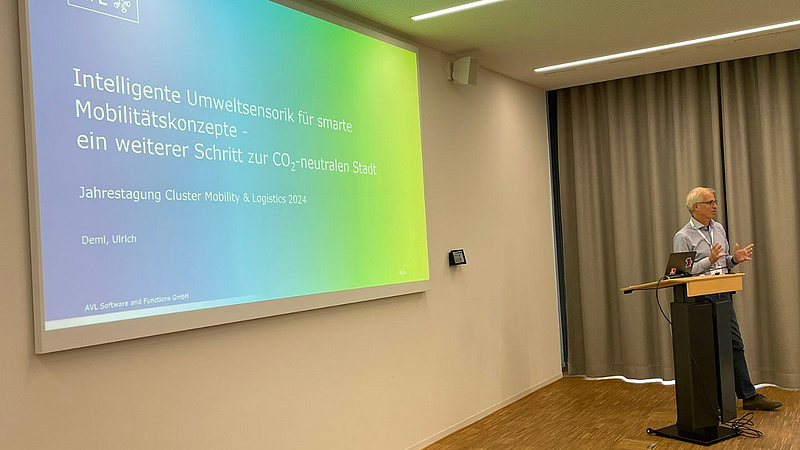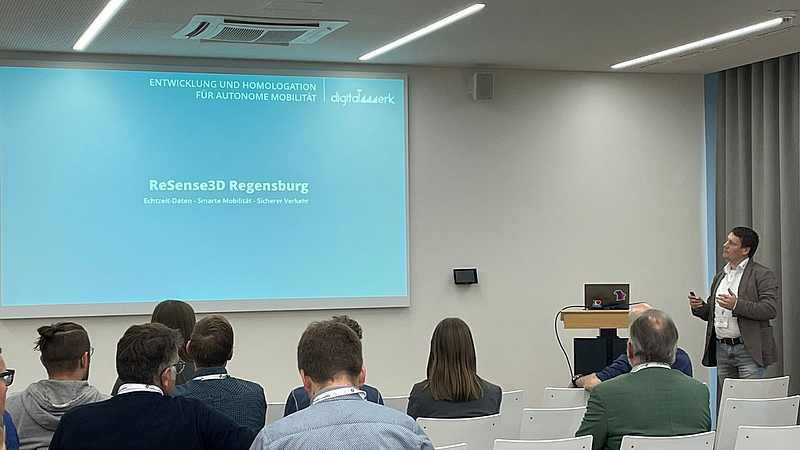How can new smart city applications be tested under real conditions on site? A real-world laboratory can help here.
In his keynote speech, Patrick Ruess from the Fraunhofer Institute for Industrial Engineering IAO used the example of the Werksviertel in Munich to demonstrate how the real-world laboratory works as an innovation method.
But the city of Regensburg has also created a so-called real-world laboratory for urban mobility on Galgenberg with the “R_Lab Mobility” project.
With the REGENSBURG_NEXT funding project, the city of Regensburg is one of 73 municipalities in Germany's largest smart city funding program, Modellprojekte Smart Cities. As part of R_NEXT, the Cluster Mobility & Logistics, the City of Regensburg, Stadtwerk.Regensburg and local companies are now launching the R_Lab Mobility project. Anne Häner gave an insight into the project in her presentation to give members of the Cluster Mobility & Logistics and interested companies an understanding of the project. In addition, the approximately 50 participants were also presented with three specific use cases that are being used in the Regensburg real-world laboratory:
- Analysis of stationary traffic by Andreas Fleischmann, DCX Innovations GmbH
- Intelligent environmental sensors for smart mobility concepts by Ulrich Deml, AVL Software and Functions GmbH
- ReSense3D Regensburg: Real-time data acquisition by Enrico Engel, digitalwerk GmbH
In addition to the presentations, our two specialist exhibitors, Deutsche Messe AG and the transform.r project, were able to present themselves to the participants in a pitch and with a stand.



